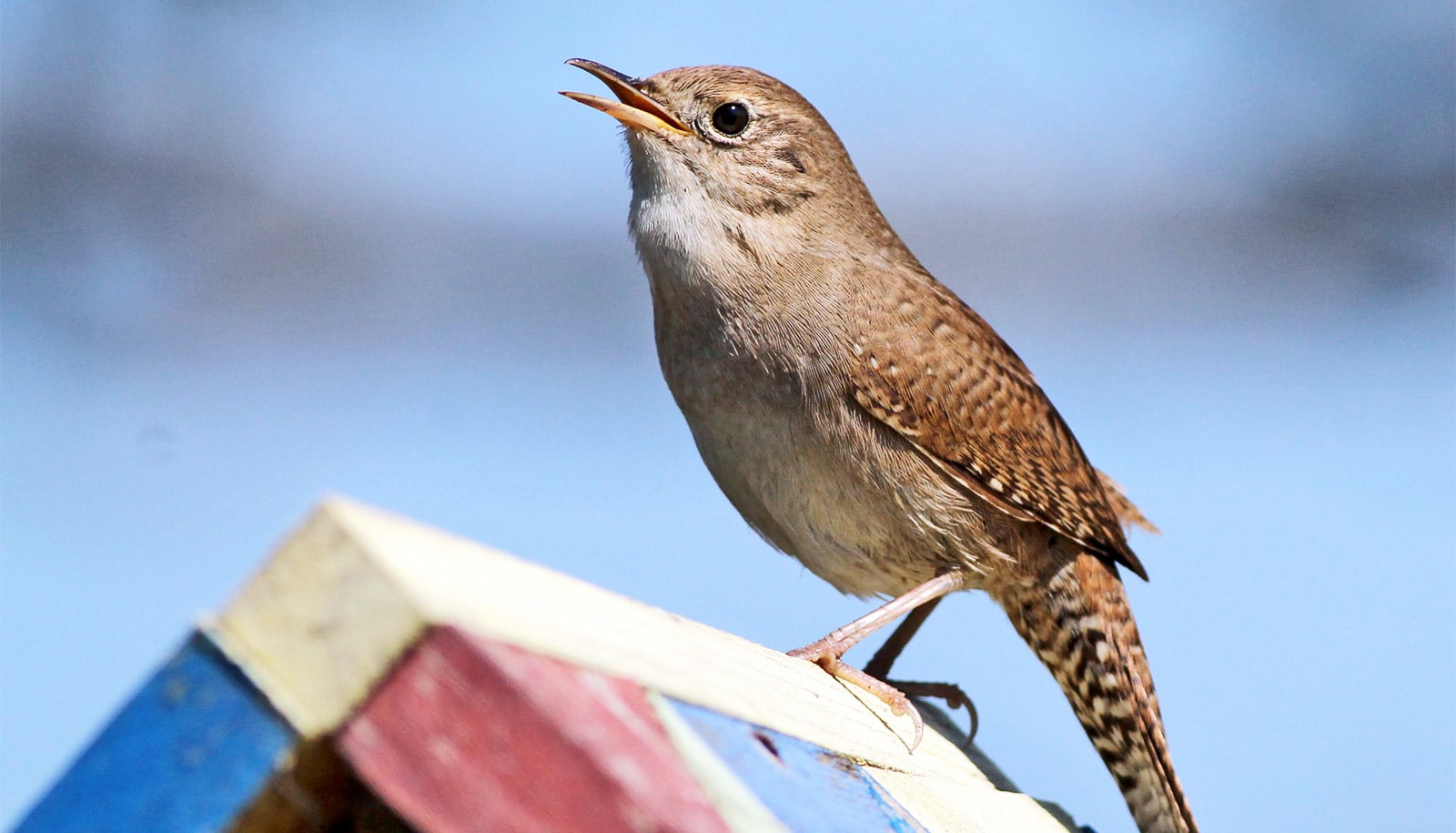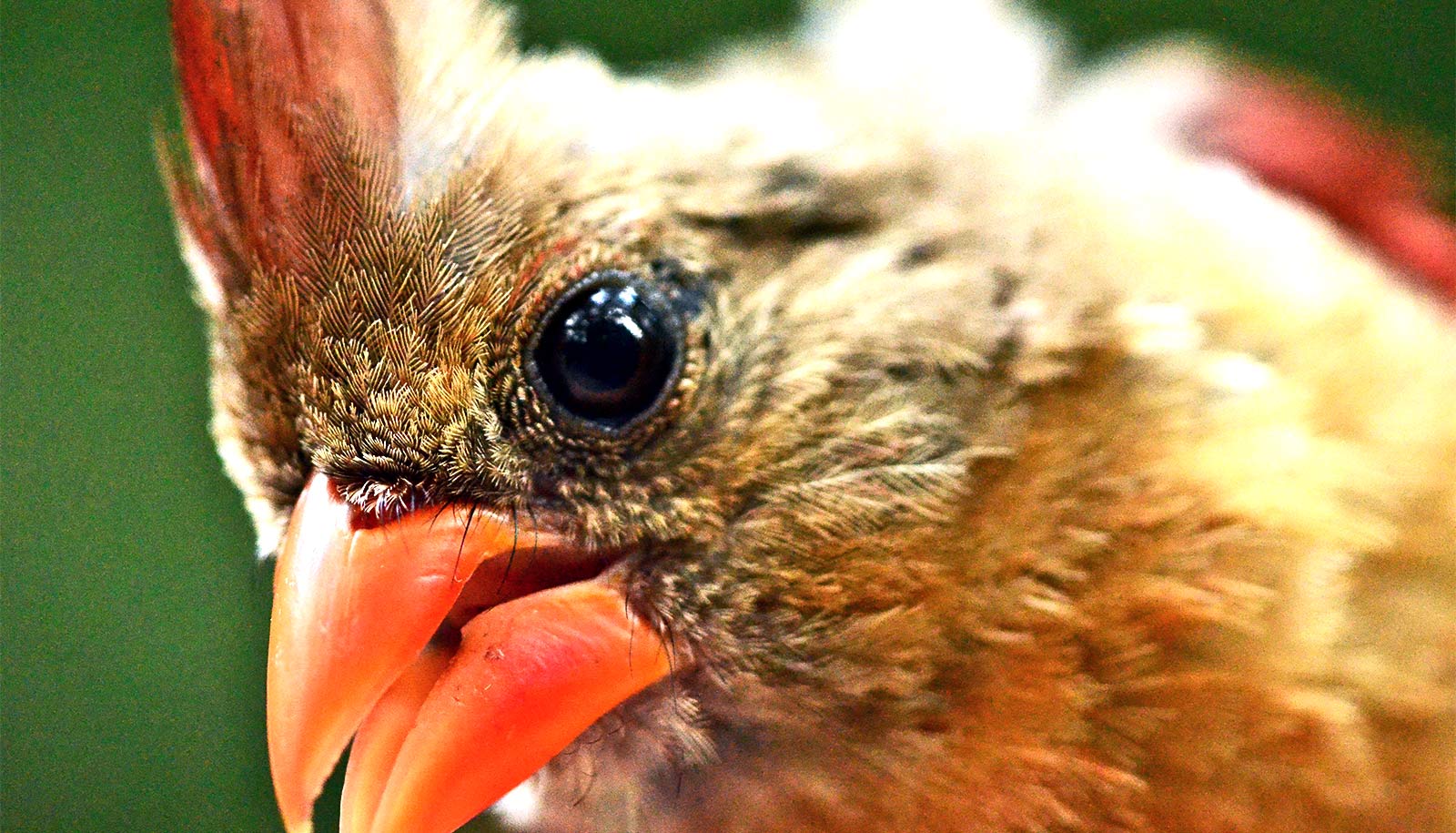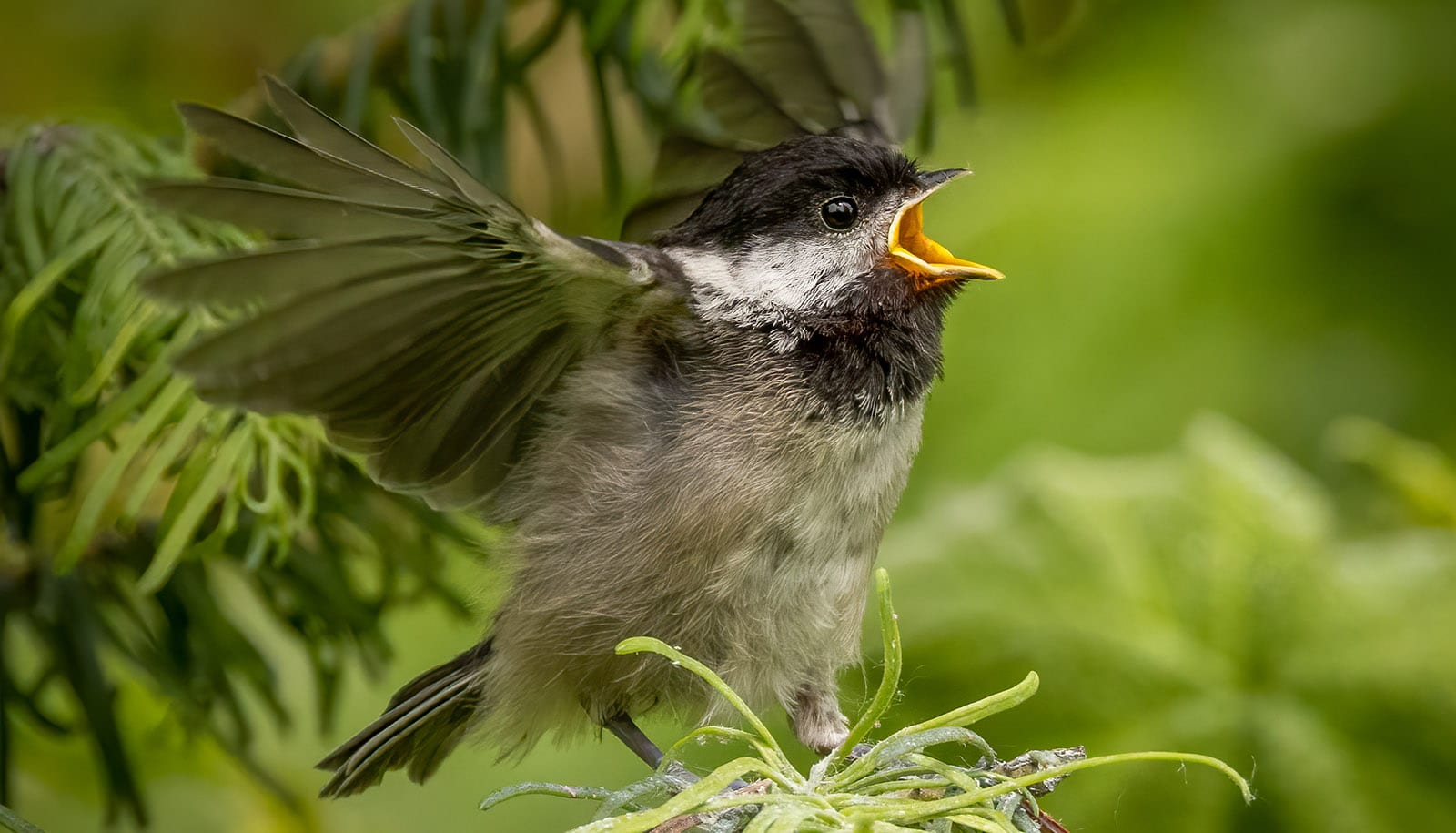Researchers have found a link between artificial light at night and lower survival for two backyard bird species living year-round around Washington DC.
Light pollution at night is known to be a deadly hazard for migratory birds, disorienting them and increasing collisions with buildings.
The study, which drew on 20 years of data collected by researchers and citizen scientists, found lower survival for the gray catbird and house wren with more light pollution at night.
The researchers also found survival for the American robin increased with artificial light. They say the findings point to factors that that could be important to understanding whether backyard birds will thrive around cities as urbanization expands, and deserve further investigation.
“This study focused on more generalist bird species that are more abundant in metropolitan areas than others,” says Lauren Pharr, a graduate student in the Fisheries, Wildlife and Conservation Biology program at North Carolina State University and lead author of the study in the journal Urban Ecosystems.
“These findings are raising awareness about our use of light, and suggest there may be things we can do to help backyard birds that live around us. When it comes to light pollution specifically, there may be things we can do as humans to increase bird survival and help them thrive.”
The researchers drew on 20 years of data from a citizen-science study called the Neighborhood Nestwatch Program, run by the Smithsonian Migratory Bird Center from 2000 to 2020.
In the study, biologists used nets to catch birds at 242 sites, mostly in the backyards of private homes across urban and rural areas of the greater Washington DC area. They tagged the birds with uniquely identifiable color bracelets. Then, volunteers looked for the color-banded birds in their neighborhoods throughout the year.
The researchers focused on seven species of songbirds that are some of the most common birds in the study area: the American robin, Carolina chickadee, Carolina wren, gray catbird, house wren, northern cardinal, and the song sparrow.
“When it comes to urbanization, all of these birds species can persist, so far,” Pharr says.
To understand factors linked to the birds’ survival, the researchers from NC State combined the data gathered in the citizen-science study with maps of light pollution, noise pollution, and paved surface area. They didn’t find links between noise pollution and survival, but they found significant associations for light for the gray catbird, house wren, and robin.
“This is an important finding; it adds to our understanding that light pollution could have sub-lethal effects on birds,” says coauthor Caren Cooper, professor of public science. “There is an effort in bird conservation to keep common birds common.
“We’re lucky we have backyard birds, and we want to keep it that way. If there are things we can understand about the environment that could be affecting their survival, the sooner we can understand that, the better.”
For the American robin, researchers already know that robins will start singing earlier in the morning in areas with more light pollution, potentially increasing the amount of time they have for finding mates or foraging.
And although the study focused on birds that live year-round in Washington DC, both the gray catbird and house wren sometimes migrate to states a little further south, though not into Central or South America like so-called long-distance migrants. The researchers say it’s possible that some of these species’ migration-related behaviors could make them more vulnerable to light pollution at night.
“There have been other studies that have reported that robins use light to their advantage to forage and find food,” Pharr says. “As far as gray catbirds, some evidence has found they are vulnerable to collisions.”
“There are so many factors that affect a bird’s survival in an urban setting, and they’re all intertwined, affecting predation, physiological harms, and the ability to find prey,” Cooper says. “Detecting patterns in avian survival rates that vary with artificial light at night is important, and we need more detailed follow-up studies about why that might be happening.”
The Alongside Wildlife Foundation and North Carolina Wildlife Federation funded the work.
Source: NC State



